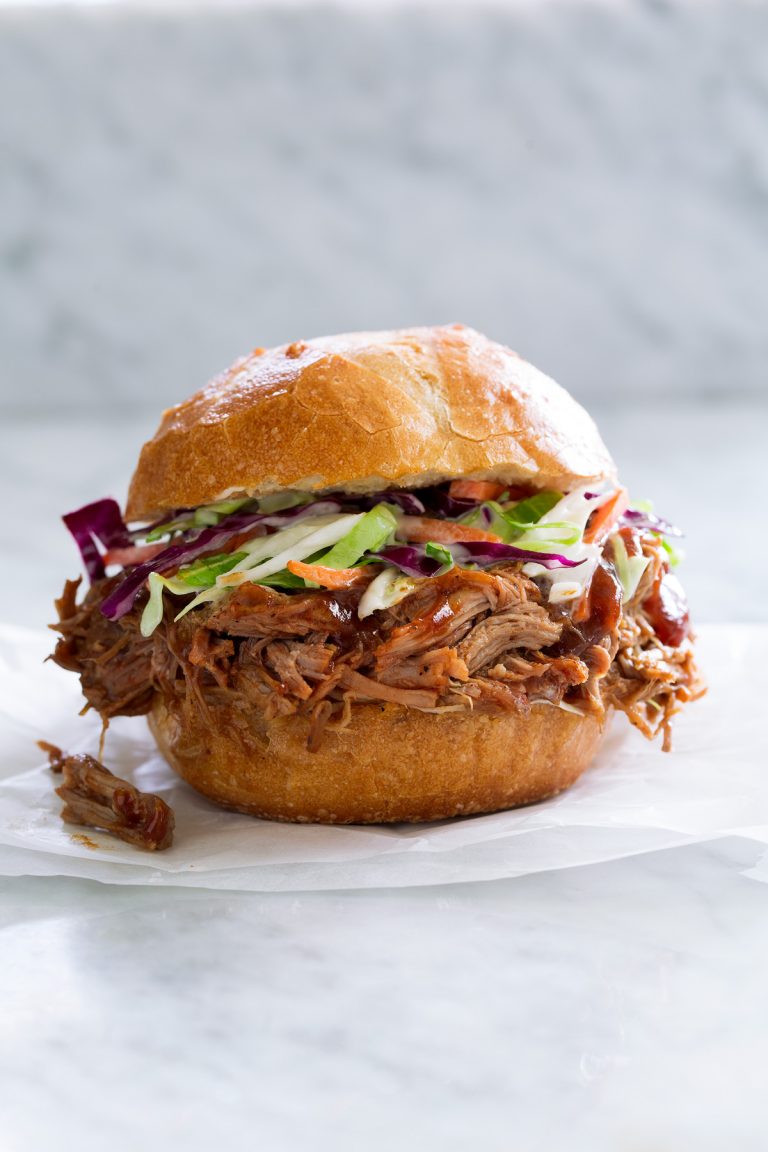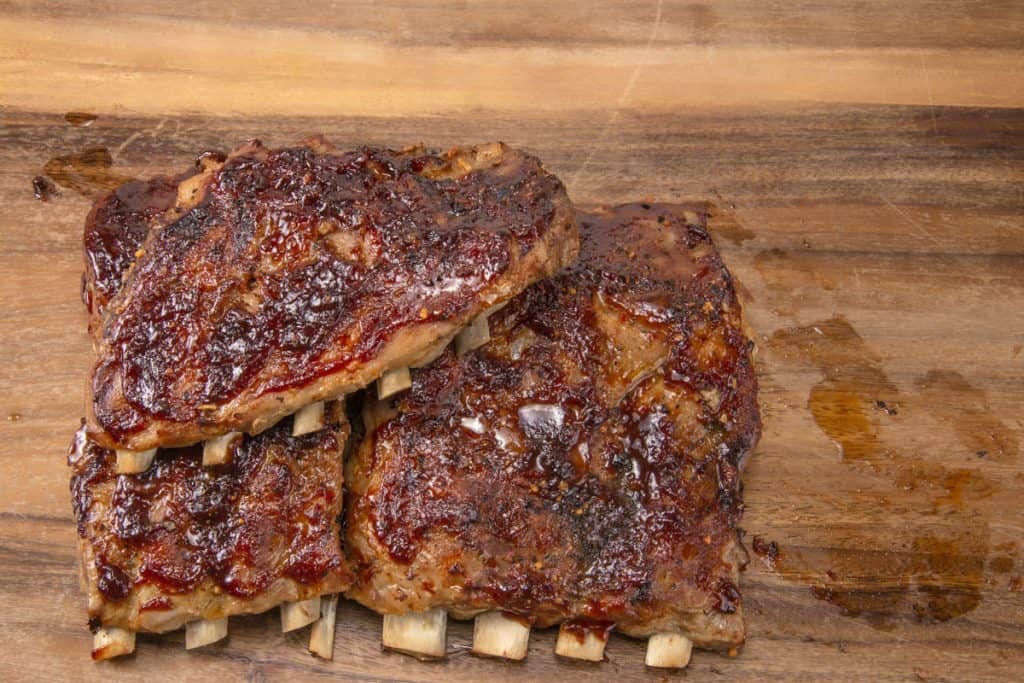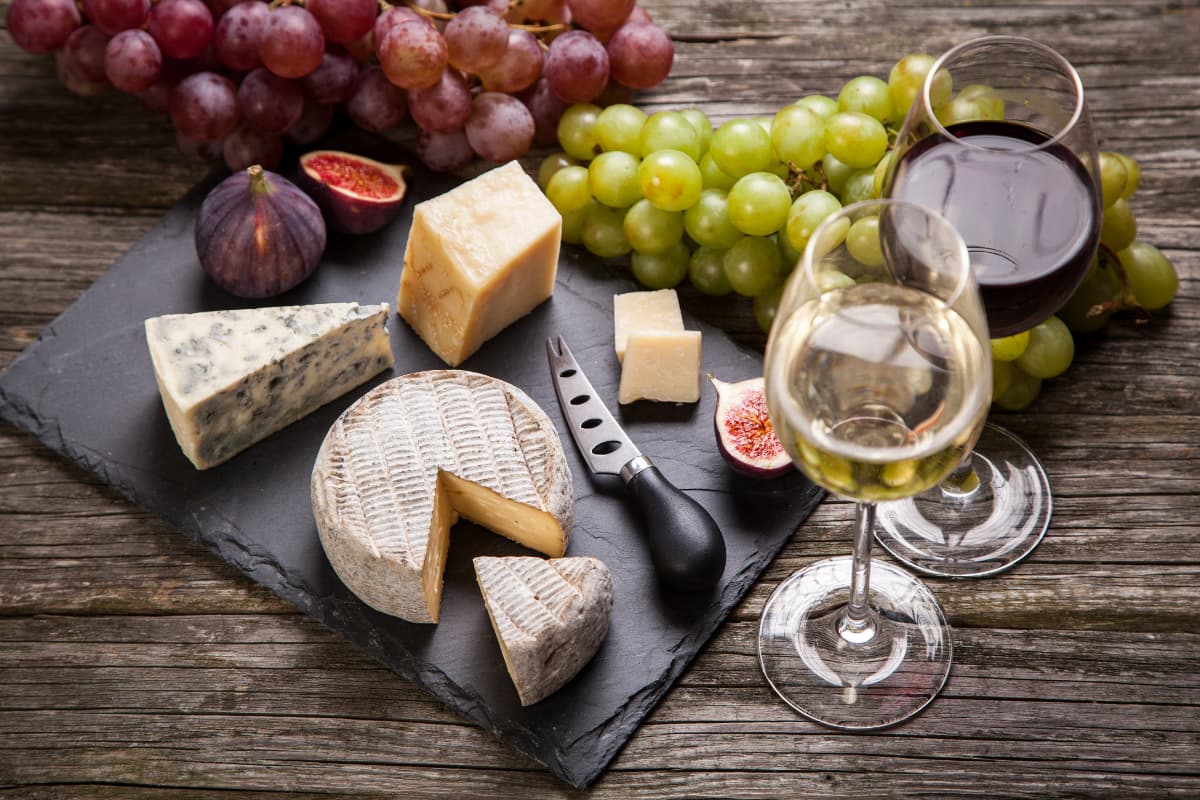You’ve probably wondered how long those succulent pork ribs can stay tucked away in the freezer without losing their savory appeal. Picture this: you open the freezer, thinking about a mouthwatering rib feast, and then you realize how much...
You’ve probably wondered how long those succulent pork ribs can stay tucked away in the freezer without losing their savory appeal. Picture this: you open the freezer, thinking about a mouthwatering rib feast, and then you realize how much time do I have before these ribs lose their sizzle?
The length of time for which pork ribs can be frozen is determined by a number of factors. Each element, from the packaging method to the freezer temperature, has an impact on the longevity of your frozen ribs. As part of our exploration, we will reveal recommended timeframes for short-term and long-term storage, providing you with a road map for keeping those ribs in optimum condition for a long time.
As we embark on this culinary adventure, we’ll go over how to freeze pork ribs in this video. Learn how to recognize freezer burn symptoms, how to identify signs of spoilage, and what thawing techniques are used to properly defrost. There will be an adventure in frozen delight, where every pork rib can be a masterpiece waiting to be eaten. Let’s get to the bottom of this freezer game and see what’s inside.
Understanding Freezing Guidelines
Diving into the intricate realm of freezing guidelines, we unveil a meticulous roadmap to preserve the savory excellence of pork ribs. The United States Department of Agriculture (USDA) stands as the beacon, offering indispensable recommendations for ensuring the optimal freezing of this delectable cut.
USDA Recommendations for Freezing Pork Ribs
General Guidelines: The USDA advocates for a strategic approach to freezing, emphasizing the importance of proper packaging and storage conditions. Ensuring that pork ribs are well-sealed guards against freezer burn and maintains their succulence. Specifics for Pork Ribs: Delving deeper, the USDA provides tailored recommendations for pork ribs. Recognizing the unique attributes of this cut, the guidelines underscore the need for airtight packaging to shield ribs from the harsh freeze, preserving both texture and flavor.Bolstering this foundation are key factors that exert influence over freezing duration, shaping the destiny of your frozen pork ribs.
Factors Influencing Freezing Duration
Packaging Considerations: The choice of packaging emerges as a pivotal factor. Opting for vacuum-sealed bags or airtight containers forms a protective shield, shielding ribs from the perils of freezer burn. Freezer Temperature and Settings: The battleground where preservation triumphs or falters. Fine-tuning your freezer settings to maintain the recommended temperature is paramount. Consistency is the key to preserving the essence of your pork ribs.Navigating this landscape demands a keen understanding of these components, each playing a crucial role in the quest for perfectly frozen pork ribs. As you embark on this culinary adventure, consider the following insights:
Packaging Mastery: Vacuum-sealing emerges as a game-changer, extracting air and sealing in flavor. This technique not only guards against freezer burn but also extends the freezer life of your ribs.
Temperature Precision: Fine-tune your freezer settings to the USDA-recommended temperature. This precision ensures that your pork ribs endure the freezing process with their texture and taste unscathed.
In the Freezing Arena
Amidst the chill of the freezer, your pork ribs await their destiny. Will they emerge as succulent delights or frozen relics of what could have been? The nuances of freezing guidelines, from the USDA’s overarching recommendations to the granular specifics for pork ribs, offer a compass in this frozen expanse. It’s a journey where each decision, from packaging choices to temperature settings, contributes to the symphony of preservation. So, as you embark on this freezing odyssey, armed with insights, may your pork ribs emerge from the icy depths as culinary masterpieces, ready to grace your table with unrivaled flavor and tenderness.
How Long Can Pork Ribs Stay in the Freezer

Image taken by: pinimg.com
In the gastronomic journey of freezing pork ribs, a critical question looms large: How long can these delectable cuts withstand the icy grip of the freezer without sacrificing their essence? This culinary conundrum is an intricate dance between short-term preservation for immediate indulgence and the extended freezing required for long-term storage. Let’s unravel the layers of this freezing odyssey, guided by the nuanced directives embedded in the USDA recommendations.
Freezing Pork Ribs for Short-Term Storage
Recommended Duration: The optimal timeframe for short-term storage hinges on precision. Aim for a freezing duration that aligns with the USDA’s general guidelines, safeguarding the ribs from the clutches of freezer burn. Tips for Maintaining Quality: Elevating this experience requires more than just freezing; it demands finesse. Employ airtight packaging to shield against external influences, and consider marinating the ribs before freezing for an infusion of flavor upon thawing.Navigating the landscape of extended freezing introduces a realm where time becomes a critical factor, influencing both texture and flavor.
Extended Freezing for Long-Term Storage
Maximum Recommended Duration: The sweet spot for long-term storage is a delicate balance. Adhering to the USDA’s maximum recommended duration ensures that your pork ribs emerge from the freezer with their savory core intact. Impact on Texture and Flavor: Beyond the temporal aspect lies the impact on the very essence of the ribs. Extended freezing can alter the texture, demanding thoughtful thawing techniques to restore the initial tenderness. Flavor, however, can endure with proper packaging and temperature control. Best Practices for Prolonged Storage: Engage in the art of preservation with best practices tailored for prolonged storage. Vacuum-sealed bags stand as sentinels against the encroachment of freezer burn, while a vigilant eye on freezer temperature maintains the ribs’ culinary integrity.In this freezing saga, data becomes the ally, supporting decisions that elevate your culinary endeavors. Precision in freezing timeframes, adherence to recommended durations, and mastery of preservation techniques define the path to unlocking the full potential of your frozen pork ribs.
Preservation Mastery: Marrying timeframes with quality preservation techniques is an art. Vacuum-sealing emerges as a superhero, preserving both texture and flavor, while strategic marination before freezing adds an extra layer of taste.
Temperature Vigilance: The temperature within your freezer isn’t just a number; it’s a guardian of flavor. Precise control in accordance with USDA recommendations ensures that the ribs maintain their taste, even in the icy depths of prolonged freezing.
In the grand tapestry of freezing pork ribs, understanding the delicate balance between short-term indulgence and long-term preservation is the key. With insights from the USDA and strategic practices, your freezer becomes a sanctuary, holding not just pork ribs but the promise of culinary delight. So, embark on this freezing journey armed with knowledge, for every thawed rib is a symphony of flavors preserved through time.
Signs of Freezer Burn and Spoilage
In the meticulous preservation dance of frozen pork ribs, vigilance against the silent culprits—freezer burn and spoilage—is paramount. Identifying these signs becomes an art, an essential skill in the culinary landscape of frozen delights.
Identifying Freezer Burn on Pork Ribs
Visual Indicators: The first line of defense against freezer burn lies in the visual cues. Watch for subtle changes in color, often manifesting as whitish patches on the surface of the ribs. These patches signal dehydration, a precursor to the insidious freezer burn that can compromise both taste and texture. Changes in Texture and Taste: As the eyes alert, so do the taste buds. Freezer burn manifests in a noticeable alteration of the rib’s texture, rendering it dry and potentially tough. The taste, once a succulent symphony, may take on a flavor akin to cardboard, signaling the infiltration of freezer burn’s icy grasp.Recognizing Signs of Spoilage
Smell and Appearance: Spoilage announces its presence with an olfactory assault. A pungent or off-putting odor emanating from the pork ribs is a red flag. Additionally, a shift in appearance, such as an unnatural discoloration or slimy film, signifies that the ribs may have crossed the threshold from frozen delicacy to potential health hazard. Safety Considerations: Beyond the sensory cues, considerations for safety take center stage. Spoiled pork ribs may harbor harmful bacteria that pose health risks if consumed. Adhering to the mantra of “when in doubt, throw it out” becomes imperative in safeguarding against potential health hazards.As guardians of frozen treasures, we must equip ourselves with these discerning skills to ensure that every thawed pork rib is a culinary masterpiece, untouched by the blemishes of freezer burn or spoilage.
Visual Vigilance: Keep a keen eye on the appearance of your frozen pork ribs. The slightest discoloration or unusual patches demand attention, serving as early warnings of potential freezer burn.
Texture as a Telltale Sign: Texture isn’t just a sensory delight; it’s a storyteller. When the once succulent pork ribs take on a dry, tough demeanor, it’s a signal that freezer burn may have compromised their integrity.
Olfactory Discernment: Trust your nose; it’s a reliable sentinel against spoilage. A sharp, unpleasant odor emanating from the ribs is an unmistakable sign that they may have ventured into the territory of spoilage.
In the quest for gastronomic excellence, mastering the art of identifying freezer burn and spoilage is non-negotiable. This skill set ensures that your culinary endeavors remain untainted, with each thawed pork rib a testament to the precision of your freezing practices. So, let the freezer be your ally, not a foe, and may every rib that graces your table be a testament to your mastery in the art of preservation.
Proper Thawing Techniques
:max_bytes(150000):strip_icc()/how-to-thaw-meat-quickly-1388007-ADD-FINAL-V3-9bf7ba24bab94ad6a0422da0510765c3.png)
Image source: thespruceeats.com
In the delicate art of culinary alchemy, the resurrection of frozen pork ribs demands a mastery of proper thawing techniques. The importance of this phase cannot be overstated, as the method chosen can influence not only the safety but also the texture and flavor of the final dish.
Importance of Proper Thawing
Thawing serves as the bridge between the frozen realm and the sizzling pan, a crucial juncture where precision becomes paramount. Proper thawing is not merely a procedural step; it is the linchpin for preserving the succulence and tenderness of pork ribs. The choice of method shapes the outcome, determining whether the ribs emerge as a delectable delight or a culinary misstep.
Methods for Safely Thawing Frozen Pork Ribs
Refrigerator Thawing:
Process: A patient approach that requires forethought. Place the frozen pork ribs in the refrigerator, allowing them to thaw gradually over an extended period. Advantages: This method ensures a controlled and uniform thaw, minimizing the risk of bacterial growth. The slow thawing process retains the ribs’ moisture, preserving their natural juices. Considerations: Planning ahead is key, as refrigerator thawing may take several hours to overnight.Cold Water Thawing:
Process: Submerge the sealed pork ribs in cold water, changing the water every 30 minutes to maintain a consistently low temperature. Advantages: A faster alternative to refrigerator thawing, this method accelerates the thawing process while ensuring a safe temperature environment. Considerations: Immediate cooking is recommended once thawed to prevent bacterial proliferation. Cold water thawing requires active monitoring.Microwave Thawing:
Process: Utilize the microwave’s defrost setting to thaw pork ribs, employing short bursts of low heat to prevent partial cooking. Advantages: Ideal for those pressed for time, microwave thawing offers a swift solution. However, it requires close attention to prevent uneven thawing. Considerations: Immediate cooking is imperative to maintain food safety. Microwaving may alter the texture of the outer layers, making it crucial to cook promptly.In the realm of proper thawing, precision meets pragmatism. Each method is a culinary tool, wielded with the finesse required to bring forth the best from frozen pork ribs.
Refrigerator Thawing Wisdom: Patience becomes a virtue as the refrigerator method unfolds, offering the luxury of time to plan your culinary masterpiece.
Cold Water Thawing Swiftness: For those with a need for speed, the cold water method emerges as the hero, swiftly thawing ribs while demanding vigilant oversight.
Microwave Thawing Efficiency: In the fast-paced world of modern kitchens, the microwave stands as a culinary ally, defrosting ribs in minutes, albeit with the caveat of immediate cooking.
In the symphony of thawing techniques, the conductor is the chef, orchestrating the thawing process to harmonize with the final act—the sizzling pan and the eager palate. So, as you embark on the thawing odyssey, remember that the method chosen isn’t just a procedural step; it’s the overture to a culinary crescendo where every thawed pork rib takes center stage in a symphony of flavor.
Freezing Cooked Pork Ribs
In the culinary realm, the journey of pork ribs from sizzling perfection to frozen preservation requires finesse, and freezing cooked pork ribs is an art in itself. As the savory symphony of spices and tenderness meets the chill of the freezer, it’s essential to adhere to guidelines that ensure the frozen rendition mirrors the delectable original.
Guidelines for Freezing Pre-Cooked Ribs
Cooked pork ribs, with their succulent essence locked in, can be preserved through freezing, extending the culinary delight for future indulgence. Understanding the nuances of freezing pre-cooked ribs is paramount to retaining their flavor and texture:
Cooling Prior to Freezing: Before embarking on the freezing journey, allow the cooked ribs to cool to room temperature. This prevents the formation of condensation inside the packaging, preserving the integrity of the ribs during freezing.
Airtight Packaging: The adversary of frozen foods is air, the culprit behind freezer burn. Shield your cooked ribs from this threat by investing in airtight packaging. Whether it’s vacuum-sealed bags or heavy-duty aluminum foil, create a barrier that safeguards against flavor degradation.
Portion Control: Divide and conquer the freezing process by portioning the cooked ribs. This not only facilitates quicker thawing for individual servings but also minimizes the need to thaw and refreeze the entire batch, preserving the ribs’ quality.
Labeling and Dating: Time may weave its own narrative in the depths of the freezer, making it crucial to label and date your packaged ribs. This not only aids in organizational prowess but also ensures that you are aware of the optimal consumption window.
Recommended Storage Duration for Cooked Ribs
While freezing is a culinary magic trick, it doesn’t grant eternal freshness. The duration of frozen perfection for cooked pork ribs is a factor that determines whether the thawed ribs emerge as a culinary triumph or a lackluster disappointment:
Short-Term Storage: For those planning to relish the cooked ribs within a month, the freezer is a reliable ally. In a well-packaged, airtight enclave, cooked ribs maintain their flavor and tenderness, ready to grace the dining table with minimal compromise.
Extended Freezing: Should your culinary aspirations extend beyond a month, consider the art of extended freezing. While the flavor may endure, texture nuances might become more noticeable after an extended freezing period. Nevertheless, with meticulous packaging, the ribs can remain a gustatory delight for up to three months.
In the intricate dance between the kitchen and the freezer, freezing cooked pork ribs becomes a gastronomic encore, a culinary treasure trove awaiting discovery. So, as you embark on the freezing odyssey, remember that each carefully packaged rib is a chapter in the epic saga of flavor preservation, promising a symphony of taste upon the thawing stage.
Additional questions and answers
What are the recommended freezer settings for pork ribs?For optimal preservation of pork ribs in the freezer, set the temperature to a consistent 0°F (-18°C) or lower. This low temperature ensures the prevention of bacterial growth and maintains the quality of the ribs during storage. Additionally, use the freezer’s specific settings, if available, to activate features like fast freeze or quick freeze when introducing freshly cooked or raw ribs. These settings help rapidly lower the temperature, minimizing the formation of ice crystals and preserving the meat’s texture. Always adhere to USDA recommendations for freezing, and ensure the freezer maintains a steady, chilly environment to safeguard the flavor and integrity of your pork ribs until you’re ready to savor them.
Are there specific risks associated with refreezing thawed pork ribs?Refreezing thawed pork ribs poses potential risks to both food safety and quality. When meat undergoes the thawing process, ice crystals form and can disrupt the cell structure, leading to moisture loss. Refreezing exacerbates this, resulting in a decline in texture and taste. Moreover, each freeze-thaw cycle provides a breeding ground for bacteria, increasing the risk of contamination. From a safety standpoint, bacteria that might have been present before freezing could multiply during the thawing phase and persist through refreezing. To maintain the best quality and reduce safety concerns, it’s advisable to cook thawed pork ribs promptly and refrain from refreezing unless the meat has been cooked thoroughly in between.
"@type": "Question", "name": What are the recommended freezer settings for pork ribs?, "acceptedAnswer": { "@type": "Answer", "text": "
For optimal preservation of pork ribs in the freezer, set the temperature to a consistent 0°F (-18°C) or lower. This low temperature ensures the prevention of bacterial growth and maintains the quality of the ribs during storage. Additionally, use the freezer's specific settings, if available, to activate features like fast freeze or quick freeze when introducing freshly cooked or raw ribs. These settings help rapidly lower the temperature, minimizing the formation of ice crystals and preserving the meat's texture. Always adhere to USDA recommendations for freezing, and ensure the freezer maintains a steady, chilly environment to safeguard the flavor and integrity of your pork ribs until you're ready to savor them.
" } , "@type": "Question", "name": Are there specific risks associated with refreezing thawed pork ribs?, "acceptedAnswer": { "@type": "Answer", "text": "
Refreezing thawed pork ribs poses potential risks to both food safety and quality. When meat undergoes the thawing process, ice crystals form and can disrupt the cell structure, leading to moisture loss. Refreezing exacerbates this, resulting in a decline in texture and taste. Moreover, each freeze-thaw cycle provides a breeding ground for bacteria, increasing the risk of contamination. From a safety standpoint, bacteria that might have been present before freezing could multiply during the thawing phase and persist through refreezing. To maintain the best quality and reduce safety concerns, it's advisable to cook thawed pork ribs promptly and refrain from refreezing unless the meat has been cooked thoroughly in between.
" }
] }
Article summary
We concluded our journey through the depths of frozen pork ribs, unraveling the mysteries of preservation and flavor. This book contains USDA recommendations and practical tips to help you extend the life of your favorite cuts of meat. You must always keep pork ribs moist and tender by storing them in the freezer.
When you arrive at the frozen landscape, keep an eye out for signs of freezer burn and spoilage. If you understand these indicators, you can enjoy thawed ribs more than a culinary disappointment. Freezing is usually best done over short or long periods, but proper packaging and adhering to the recommended storage duration are also important factors.
Pork ribs that have been thawing, on the other hand, retain their integrity. To meet your culinary timeline, defrost your refrigerator slowly and painstakingly, or use cold water or microwave thawing to accomplish the task in a matter of minutes. There are several methods that ensure that your ribs’ flavors are intact after they have been frozen.
We’ve reached the conclusion that the freezer is more than just a storage unit, as it becomes a curator of taste and texture. These guidelines will transform your freezer into a treasure chest of perfectly preserved pork ribs. If you’re planning a culinary adventure in the future, remember the journey we’ve taken together, learning the secrets of freezing pork ribs to the finest of standards. If you want to know what kind of meat you should keep in the freezer, we hope your ribs will be ever delectable.














